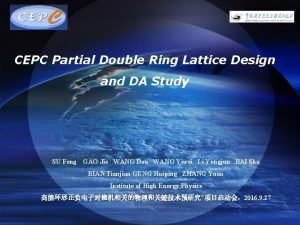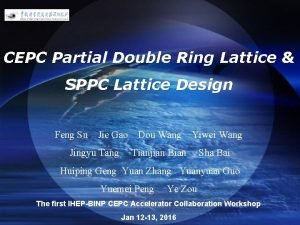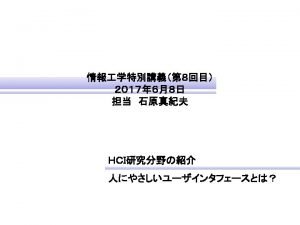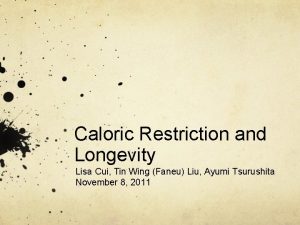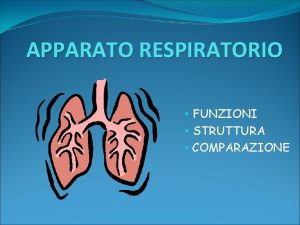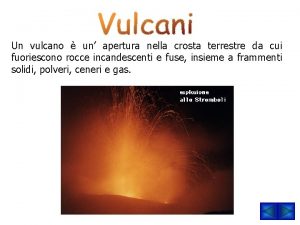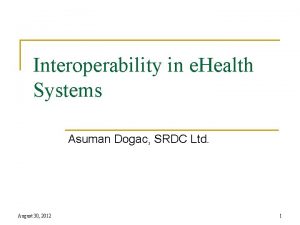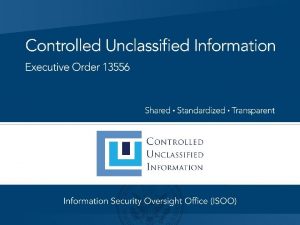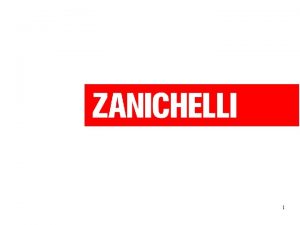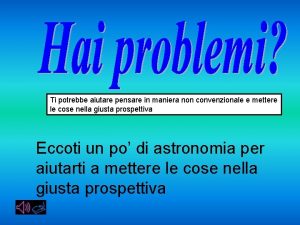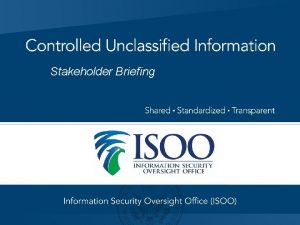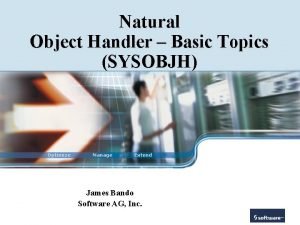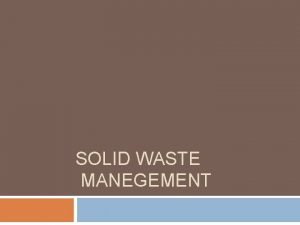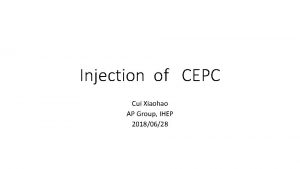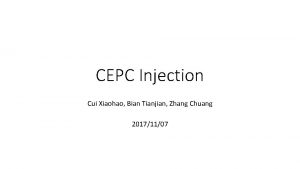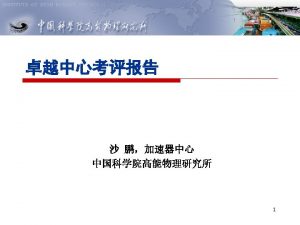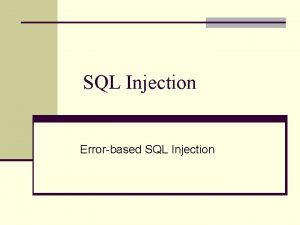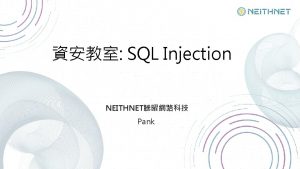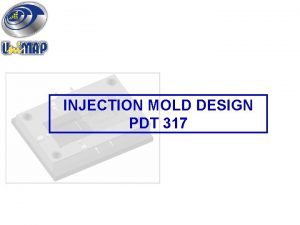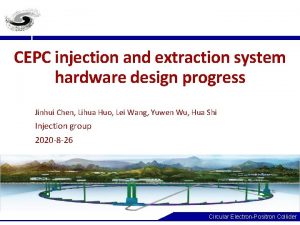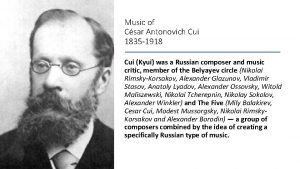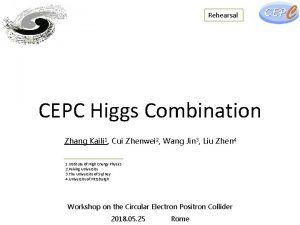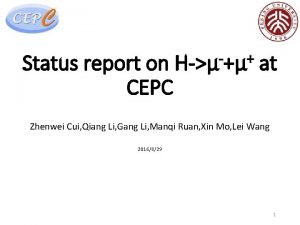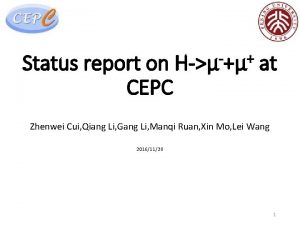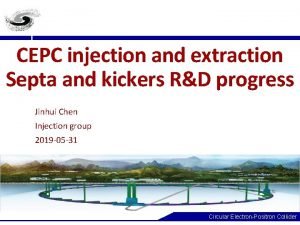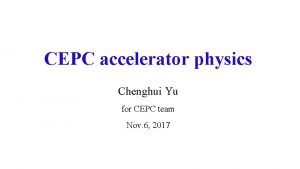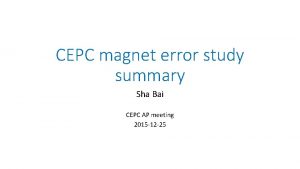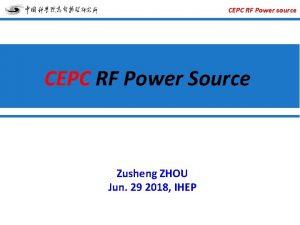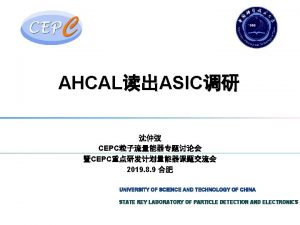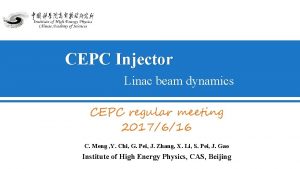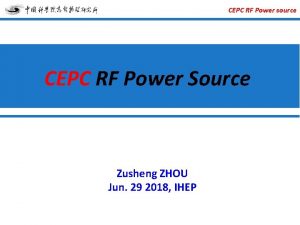Injection design of CEPC Cui Xiaohao And CEPC
























- Slides: 24

Injection design of CEPC Cui Xiaohao And CEPC Group 2018/11/12

1. Introduction: • A Linac accelerate electrons and positrons • • to 10 Ge. V. A booster with the same circumference with the collider. For high luminosity, top-up injection is needed. For the simplicity and robustness of the injection system, a conventional off-axis injection is chosen as our baseline design. For Higgs mode, an swap-out on axis injection is chosen as another choice, in case of small DA in the collider.

Some key parameters of the collider ring Higgs W Z Energy (Ge. V) 120 80 45. 5 Bunch number 242 1524 12000 Bunch Charge (n. C) 24 19. 2 12. 8 17. 4 87. 9 461 0. 3336 1. 21/0. 0031 0. 54/0. 0016 0. 17/0. 004 0. 67 1. 4 4 Bunch Current (m. A) Revolution Period (ms) Emittance x/y (nm) Life time (Hour)

The geometry of the injection system

2. Off-Axis Injection: Injection from Linac to booster Booster ramping to Extraction Energy Booster ramping to 10 Ge. V Inject from booster to collider repeat

Injection time structure: Different injection time Structure for different mode

This injection system fulfills the 3% top-up injection and full injection. Mode Higgs Injection Mode Top-up Bunch number 242 Bunch Charge (n. C) 0. 72 1 0. 384 0. 55 Beam Current (m. A) 0. 5227 0. 726 2. 63 3. 67 6. 91 10 Current threshold 1 m. A 4 m. A 10 m. A Number of Cycles 1 1 2 Current decay 3% 3% 3% Ramping Cycle (sec) (Up + Down) Filling time (sec) (e+,e-) 10 6. 6 3. 8 25. 84 39. 6 275. 2 Injection period (sec) 47 131 438 10 min 15 min 2. 2 Hour (collide from 230 m. A Full Injection time Full W Z Top-up Full Top-up 1220 6000 Full

X’ Bumped Stored beam Septum Injected beam 2 mm For Higgs: e_x = 1. 21 nm. rad; e_inject = 3. 1 nm. rad sx = 0. 47 mm, s_inject = 0. 45 mm Septum = 2 mm Acceptance > 13 s X For W: e_x = 1. 21 nm. rad; e_inject = 1. 59 nm. rad sx = 0. 47 mm, s_inject = 0. 45 mm Septum = 2 mm Acceptance > 14 s Bump Height For Z: e_x = 0. 17 nm. rad; e_inject = 0. 51 nm. rad sx = 0. 18 mm, s_inject = 0. 16 mm Septum = 2 mm Acceptance >4 sxc + 6 sxi + S Acceptance > 16 s

Current evolution in collider-Higgs • Top up one injection (26 s/35 s) every 47 s • Full injection from empty 10 min • Collider lifetime (non-collision) 924 hours: dominated Toucheck lifetime Top up Full injection

Current evolution in collider-W • Top up one injection (46 s) every 153 s • Full injection from empty 15 min • Collider lifetime (non-collision) 105 hours: dominated Toucheck lifetime Top up Full injection

Current evolution in collider-Z • Top up one injection (4. 6 min) every 7. 3 min • Full injection from empty 2. 2 hours (bootstrapping start from half of the design current) • Collider lifetime (non-collision) 53 hours: dominated Toucheck lifetime Top up Full injection

Kickers and Septums for booster injection and extraction: Booster Injection Component Length (m) Waveform Deflection Field (T) angle (mrad) Septum 2 DC 9. 1 0. 152 Beam-Stayclear H(m V(mm m) ) 63 63 Kicker 0. 5 Half_sin 0. 5 0. 034 63 63 Booster Extraction Component Length (m) Waveform Deflection Field (T) angle (mrad) Septum 10 DC 10. 41 Beam-Stayclear H(m V(mm m) ) 20 20 Kicker 2 Half_sin 0. 2 0. 04 20 20

Kickers and Septums for collider injection: Component Length (m) Waveform Deflection angle (mrad) Field (T) Beam-Stayclear H(m V(m m) m) 20 20 Septum 8. 75 DC 14 0. 64 Septum 8. 75 DC 7 0. 32 20 20 Septum 8. 75 DC 3. 5 0. 16 20 20 Septum 8. 75 DC 1. 75 0. 08 20 20 Kicker 2 Half_sin 0. 1 0. 02 20 20

3. On-Axis Injection: Linac Ramp up booster collider Repeat booster collider 1. Inject 242 small bunches into the booster. 2. Ramp the booster to high energy and inject several (7 for example) bunches from the collider into the booster. 3. Large bunches stay in the booster for 4 damping time(200 ms), so that the injected bunches merge with booster bunches. 4. Inject the merged large bunches back to the same empty buckets left by the last step. 5. Repeat the last steps.

Merge bunches in the booster • 1. The booster is used as an accumulator ring. • 2. Inject the large bunch in the collider into the booster, not the other way around. • 3. off-axis injection and bunch mergence are performed in the booster, whose dynamic aperture is large enough. • 4. With this on-axis injection, the required dynamic aperture in the collider is only 8 sx. • 5. For W, Z mode, the dynamic aperture in the collider is large enough, and we don’t need this on-axis injection.

DA requirement: Y Off-axis 13 sx X 15 sy • The required horizontal DA in the booster reduce from 13 sx to 8 sx. • The required vertical DA also decrease a little. X Y X On-axis 8 sx X 15 sy

Time structure of the booster: Injection cycles 3% current decay in the collider • The small bunch charge in booster is 3% of the charge of the colliding bunch in the collider. • With a 3% current decay, the injection period of CEPC should be less than 47 s. Current limit in the booster • The bunch charge in the collider is 24 n. C, which is less than the booster's single bunch charge limit of 100 n. C. • At the beginning, only 7 bunches are injected into the booster, so that the current in the booster does not exceed the 1 m. A threshold limited by the RF power. Exchange bunches between the booster and collider 26 times. 5. 2 s 5 s 5 s 2. 4 s Linac to Ramp up booster Ramp down Positron injection Electron injection 35. 2 s

Injection from the collider to booster A vertical off-axis injection Bunch after injection Septum • Transfer beam from the collider to booster vertically. • 4 -kicker bump in the booster. Septum kicker Phase space of the first 100 turns Bunch before injection

Injection from booster to the collider A vertical on-axis injection Bunch after injection Septum • Transfer beam back to the collider vertically. Septum quad kicker Phase space of the first 100 turns Bunch before injection

• We need to inject the bunch back into the same bucket after damping in the booster. • The booster and collider has the same circumference, which makes this easier. • Due to the different paths traveled by the injection beam and the circulating beam, a longitudinal deviation is introduced. Booster 261. 2 m collider 2. 4 m 261. 189 m Longitudinal phase shift • The length of the transport line is 261. 2 meters, and the path difference between the injected beam and the circulating beam is only 0. 011 meters, or 0. 037 ns in time. • This is equivalent to a 17 degree phase shift in the booster, and is in the stable region. This phase shift can be damped by synchrotron radiation. Or move the RF phase of the booster Did experiment at BEPC II, we found that 200 ms is enough to move a 17 degree.

Beam loading effect is weak • Transient beam loading in the booster by the injection of large bunch and larger total beam current • With 7 large bunches (0. 07 m. A) evenly distributed among the other small bunches. Max cavity voltage drop is 0. 48 %. Max phase shift is 0. 63 deg. • For 13 large bunches. Assume they are in a very short bunch train. Max cavity voltage drop is 5. 8%. The maximum phase shift is 7. 7 deg.

flip-flop instability We considered bunch instability due to the absence of several bunches in the collider. • A beam-beam simulation shows that there is no flip-flop instability. Simulation result of Zhang Yuan

4. Summary • An baseline injection design from Linac to the collider is discussed, which can work for Higgs, W, Z mode. • An on-axis injection is designed to reduce the required dynamic aperture for Higgs energy injection. • Future work will be more focused on the optimization of the injection design, and considering the hardware.

Thank you For your attention!
 Cepc logo
Cepc logo Cepc logo
Cepc logo Ud of classified information and cui
Ud of classified information and cui Cui java
Cui java Tuiとは
Tuiとは Cui//sp-prvcy
Cui//sp-prvcy Chestermere bottle depot
Chestermere bottle depot Teng cui
Teng cui Lisa cui
Lisa cui I due rami in cui si biforca la trachea
I due rami in cui si biforca la trachea Eruzione peleeana
Eruzione peleeana Interoperability in healthcare
Interoperability in healthcare Eo 13556
Eo 13556 Cui timetable
Cui timetable Ci sono dei momenti nella vita
Ci sono dei momenti nella vita Il primo canto della divina commedia
Il primo canto della divina commedia Cui
Cui Piante il cui seme è racchiuso in un frutto
Piante il cui seme è racchiuso in un frutto Mercurio
Mercurio Sf 902 cui
Sf 902 cui Cui commands
Cui commands Esulti il coro degli angeli esulti l'assemblea celeste
Esulti il coro degli angeli esulti l'assemblea celeste Stable prediction across unknown environments
Stable prediction across unknown environments Solid
Solid Cui sfs
Cui sfs
